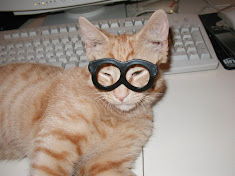 |
| Teddy Bear Hamster Posing Pretty by Alix Clinkingbeard |
Probably best known as the Golden hamster or Fancy hamster, the Syrians show up in a mixture of colors and popular subspecies names. In the wild, the natural coloration of the Syrian is golden brown or "agouti", which means dark and light banded hairs. In their natural setting, the Syrians are solitary animals and quite territorial. And, they're no different in captivity, as they are extremely non-social towards other hamsters and can quickly engage in a fight to the death when caged together. They may get along with others when quite young, but by the age of 10 weeks, it's essential that they be caged separately.
The variety of colors, common to the captive bred Syrian hamster, serves as the foundation for the various names popularized by the lucrative pet shop market. The European Black Bear hamster, Honey Bear hamster, Panda Bear hamster, Teddy Bear hamster, Polar Bear hamster, Dalmatian hamster, and Black Bear hamster. Regardless of the name, it's important to remember that a Syrian is a Syrian. They are sociable to humans, but aggressive and deadly to each other, except when very young. So, no matter the color, the rules for safety still apply.
The Golden hamster is a nocturnal (nighttime) or to be more accurate, a Crepuscular (dusk and dawn) member of the rodent family. This means they spend most of the daylight hours snuggled up in their hideaways fast asleep. But, as the sun begins to decline behind the horizon, these little critters come alive and begin their ritualistic foraging and exercising. Out in the wild this is the safest time of the day for the hamster to be roaming about in search of food, as predators are most active either during the hours of daylight or the dead of night, leaving dusk and dawn as the least likely time to be discovered and devoured.
As you'll discover with most hamsters, the Syrian is relatively low maintenance. They clean themselves (no bath recommended or required), need a reasonably inexpensive cage and consume modest amounts of specialized hamster food and treats. Fresh fruits and vegetables supplement the diet and are served in moderation. The only required equipment is the water bottle with metal tube spout to provide an ever-ready supply of fresh water and the incredibly important, hamster wheel that facilitates the essential requirement for life sustaining physical fitness exercise.
Copyright 2010 Walter Tekman. All rights reserved. Please feel free to share the entire contents of this article with your friends or post it on your site as long as it is left intact with all links unchanged, including this notice.
Walter Tekman is a pet hamster enthusiast and author of The Best Ever Guide To Dwarf Hamsters available at http://www.careofhamsters.com/bestever.html. He spends much of his time advising others on how to setup and maintain the perfect hamster habitat, while selecting the best possible hamster as a pet. Go to http://www.careofhamsters.com/ for his complimentary 10-day free email mini-course.
Article Source: http://EzineArticles.com/?expert=Walter_Tekman
http://EzineArticles.com/?Which-Hamster-Breed-is-the-Most-Popular?&id=4043668



0 comments:
Post a Comment